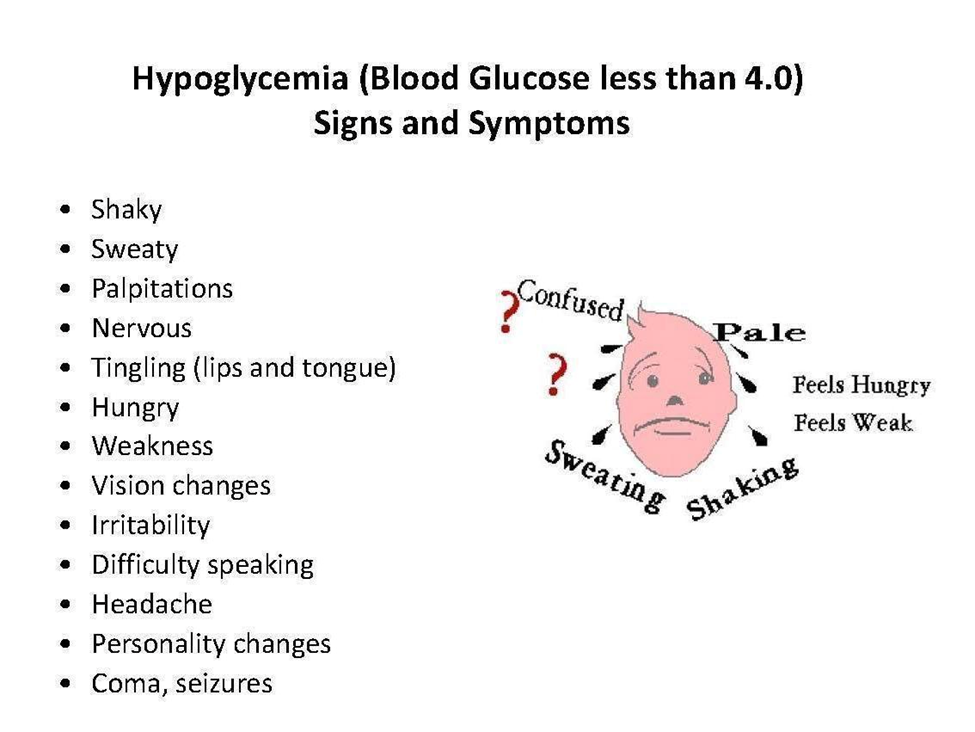A nurse is assessing a client diagnosed with diabetes mellitus. Which of the following findings is a manifestation of hypoglycemia?
Tremors
Bradycardia
Vomiting
Fruity odour on the client’s breath
The Correct Answer is A
A. Tremors:
Tremors or shaking is a common symptom of hypoglycemia. When blood glucose levels drop too low, the body reacts by releasing hormones like adrenaline, leading to symptoms such as tremors, shakiness, and palpitations.
B. Bradycardia:
Bradycardia, or a slow heart rate, is not typically associated with hypoglycemia. Instead, hypoglycemia tends to stimulate the release of adrenaline, which can increase heart rate.
C. Vomiting:
Vomiting is not a classic manifestation of hypoglycemia. Nausea may occur, but vomiting is more commonly associated with conditions such as hyperglycemia or diabetic ketoacidosis.
D. Fruity odor on the client’s breath:
A fruity odor on the breath is more commonly associated with diabetic ketoacidosis (DKA) in individuals with diabetes mellitus, particularly when there is an accumulation of ketones in the body. It is not a typical manifestation of hypoglycemia.

Nursing Test Bank
Naxlex Comprehensive Predictor Exams
Related Questions
Correct Answer is C
Explanation
A. Instruct the client that they can lift over 20 lbs:
Lifting heavy objects should be avoided postoperatively to prevent strain on the surgical site. The specific weight restriction may vary, but lifting heavy objects is generally discouraged.
B. Offer the client ice cream postoperatively:
While offering ice cream may be a comforting measure, it is not a specific action related to the recovery from a laparoscopic cholecystectomy.
C. Encourage ambulation once fully awake:
This is the correct action. Encouraging ambulation helps prevent complications such as blood clots and promotes recovery after laparoscopic surgery. Early mobility is generally encouraged unless contraindicated for specific reasons.
D. Place the client in a supine position postoperatively:
The position of the client postoperatively depends on the specific surgical procedure and the surgeon's preferences. However, placing the client in a supine position alone is not a comprehensive postoperative care action.
Correct Answer is C
Explanation
A. Storing unopened bottles of insulin in the freezer is incorrect. Insulin should be stored in the refrigerator, and freezing can damage the insulin.
B. Having a morning blood glucose level between 200 and 230 is too high. The target range for fasting blood glucose is generally lower, and elevated levels may indicate the need for adjustment in insulin or other medications.
C. Eating a snack half an hour before playing soccer is a correct understanding. This helps prevent hypoglycemia during physical activity. Physical activity can lower blood glucose levels, and a pre-activity snack can provide additional carbohydrates to prevent low blood sugar.
D. Not taking regular insulin when sick is incorrect. In fact, insulin needs may increase during illness, and it is usually recommended to continue taking insulin even when sick. Adjustments to the insulin regimen may be needed under the guidance of healthcare providers.
Whether you are a student looking to ace your exams or a practicing nurse seeking to enhance your expertise , our nursing education contents will empower you with the confidence and competence to make a difference in the lives of patients and become a respected leader in the healthcare field.
Visit Naxlex, invest in your future and unlock endless possibilities with our unparalleled nursing education contents today
Report Wrong Answer on the Current Question
Do you disagree with the answer? If yes, what is your expected answer? Explain.
Kindly be descriptive with the issue you are facing.
